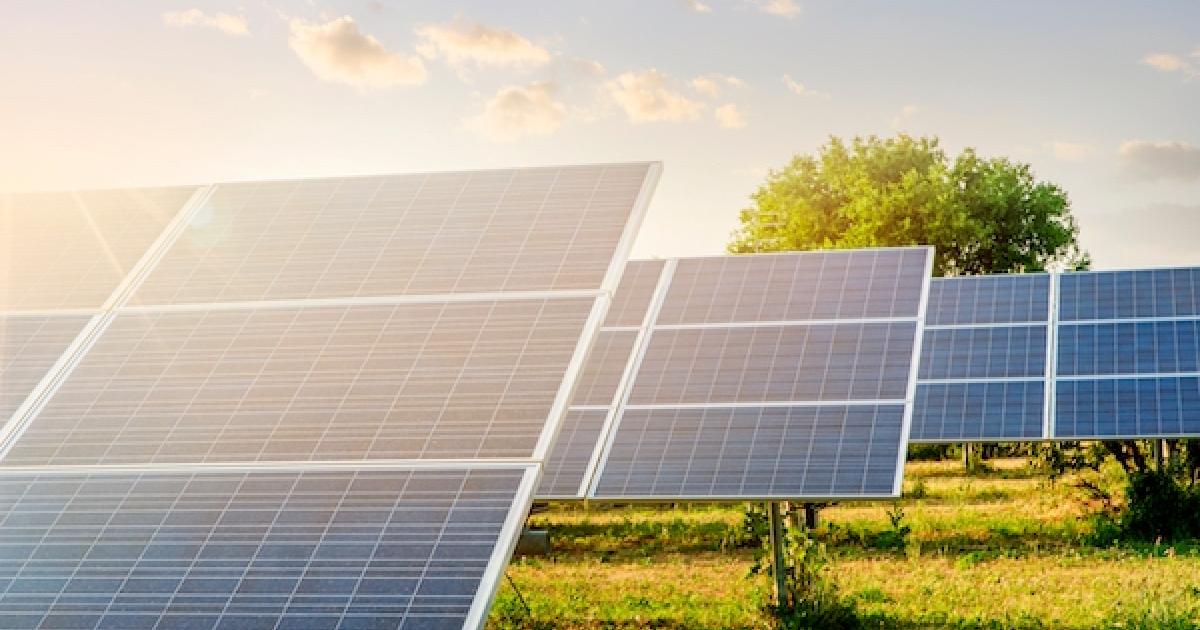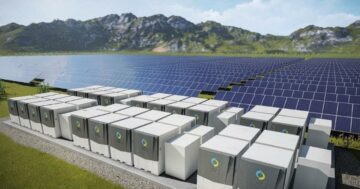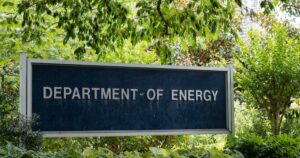
This article is sponsored by Wells Fargo.
Solar energy continues to grow in popularity. Many people consider it a no-brainer: You transition to cleaner energy while reducing your monthly energy bill, even when factoring in your financing repayments.
Rooftop solar is an increasingly common way for households to benefit from solar power. A recent report from Lawrence Berkeley National Laboratory (LBNL) showed that approximately 3.25 million households have rooftop solar panels. That figure is steadily rising due to falling technology costs and new incentives from the federal Inflation Reduction Act (IRA).
However, rooftop solar panels are not a viable option for every home, and not everyone who wants to install solar panels can afford to do so.
Overcoming the equity gap
Growing data shows residential rooftop solar is skewed towards wealthy households. In 2021, as the LBNL report highlights, the median household income of a solar adopter is double the overall national median income.
Residential solar is almost exclusively sold to and installed on owner-occupied single-family homes. That leaves about 60 million other households that either rent or live in multi-family buildings, such as those with condos and co-ops, out of the solar market.
Typically, renters cannot install rooftop solar panels because the installation costs fall to the building owner while the tenant enjoys the resulting electric bill savings. Multi-family buildings typically have even more complex barriers, including the same owner-tenant "split-incentive" challenges and physical roof limitations.
Expanding access with subscription-based solar power
Community solar is a unique approach that allows a household to get some of the energy bill savings from rooftop solar without installing the solar panels. This model of distributed solar — often referred to as community solar gardens or virtual net metering — allows a large group of households to sign up jointly for or subscribe to use a certain amount of solar power coming from one large solar project.
The power a household uses from the community solar project replaces power otherwise purchased from the electric utility. The solar garden subscription fee varies depending on the size of the project and how much of the resulting solar power the household wants to use. If the price of power from the community solar subscription is less than the utility price — which is typically true — then the result is a lower monthly bill. On average, solar garden subscribers can save 10 percent on their annual electric bill.
Federal and state support encourage community solar gardens to become more popular
By 2027, community solar installations are expected to grow to approximately 1,500MW of annual capacity additions from 600MW in 2018. The existence and economics of community solar markets is largely state-dependent in the U.S. As more state lawmakers pass policies and regulations to allow these kinds of arrangements, more Americans will be able to subscribe to community solar projects.
The IRA, passed in 2022, provides significant new incentives to deploy solar resources that benefit low-income and disadvantaged communities, including bonus tax credits. For example, the law provides a 10 percent bonus to projects in low-income communities or communities historically reliant on fossil fuel activity. It gives a 20 percent bonus to projects that include low-income residential buildings.
In the January "Investing in Resilient and Equitable Neighborhoods" report sponsored by Wells Fargo, the U.S. Conference of Mayors highlights a community solar program in San Antonio, Texas. The utility and a local developer partnered to install community solar across 12 privately owned parking lots. A solar assistance program such as this could help increase participation by lower-income community members, providing them greater access to affordable clean energy.
In addition, the EPA’s $27 billion Greenhouse Gas Reduction Fund includes strict mandates to fund emissions-reducing projects in low-income communities. The EPA recently announced that it will offer $7 billion of the fund to state, local and tribal governments to drive "deployment of residential rooftop solar, community solar and associated storage and upgrades in low-income and disadvantaged communities." This can provide a significant boost to low-income-focused community solar. The agency will offer the remaining $20 billion of the fund more broadly for emissions-reducing activity, of which at least $8 billion is to flow to low-income communities, making community solar projects a prime target for those funds as well.
Community solar projects are designed to serve households that otherwise would be shut out of rooftop solar. These communities are seeing opportunities in the solar market thanks to increasing state level support and new federal financial incentives. There is more awareness than ever that energy and climate justice must be prioritized as part of a clean energy transition. This also represents a significant business opportunity for project developers and capital providers.
- SEO Powered Content & PR Distribution. Get Amplified Today.
- Platoblockchain. Web3 Metaverse Intelligence. Knowledge Amplified. Access Here.
- Minting the Future w Adryenn Ashley. Access Here.
- Source: https://www.greenbiz.com/article/community-solar-gardens-can-help-close-equity-gap
- :is
- $UP
- 1
- 10
- 2018
- 2021
- 2022
- a
- Able
- access
- across
- Act
- activity
- addition
- affordable
- agency
- allows
- Americans
- amount
- and
- announced
- annual
- approach
- approximately
- ARE
- article
- AS
- Assistance
- associated
- At
- average
- awareness
- barriers
- BE
- because
- become
- benefit
- Berkeley
- Bill
- Billion
- Bonus
- boost
- broadly
- Building
- business
- by
- CAN
- cannot
- Capacity
- capital
- certain
- challenges
- clean energy
- Climate
- Close
- coming
- Common
- Communities
- community
- complex
- Conference
- Consider
- continues
- Costs
- could
- data
- Depending
- deploy
- deployment
- designed
- Developer
- developers
- distributed
- double
- drive
- Economics
- either
- Electric
- encourage
- energy
- EPA
- equity
- Ether (ETH)
- Even
- EVER
- Every
- everyone
- example
- exclusively
- expected
- Fall
- Federal
- fee
- Figure
- financial
- financing
- flow
- For
- Fossil fuel
- from
- Fuel
- fund
- funds
- gap
- Garden
- Gardens
- GAS
- get
- gives
- Governments
- greater
- greenhouse gas
- Group
- Grow
- Have
- help
- highlights
- historically
- Home
- Homes
- household
- households
- How
- HTTPS
- in
- Incentives
- include
- includes
- Including
- Income
- Increase
- increasing
- increasingly
- inflation
- install
- installing
- IRA
- IRS
- IT
- January
- jpg
- Justice
- laboratory
- large
- largely
- Law
- lawmakers
- Level
- limitations
- live
- local
- Making
- mandates
- many
- many people
- Market
- Markets
- MARKETWATCH
- Mayors
- Members
- million
- model
- monthly
- more
- multi-family
- National
- net
- New
- of
- offer
- on
- ONE
- opportunities
- Opportunity
- Option
- Other
- otherwise
- overall
- owned
- owner
- panels
- parking
- part
- participation
- partnered
- pass
- passed
- People
- percent
- physical
- plato
- Plato Data Intelligence
- PlatoData
- policies
- popularity
- power
- price
- Prime
- prioritized
- Program
- project
- projects
- provide
- providers
- provides
- providing
- purchased
- recent
- recently
- reducing
- referred
- regulations
- remaining
- Rent
- renters
- repayments
- report
- represents
- residential
- resilient
- Resources
- result
- resulting
- rising
- roof
- s
- same
- San
- Save
- Savings
- seeing
- serve
- Shows
- sign
- significant
- Size
- So
- solar
- solar panels
- Solar Power
- sold
- some
- Sponsored
- State
- storage
- strict
- subscribe
- subscribers
- subscription
- such
- support
- Target
- tax
- Technology
- tenant
- texas
- that
- The
- the Law
- their
- Them
- These
- to
- towards
- transition
- Tribal
- true
- typically
- u.s.
- unique
- upgrades
- urban
- use
- utility
- viable
- Virtual
- Way..
- WELL
- Wells
- Wells Fargo
- which
- while
- WHO
- will
- with
- without
- would
- Your
- zephyrnet









